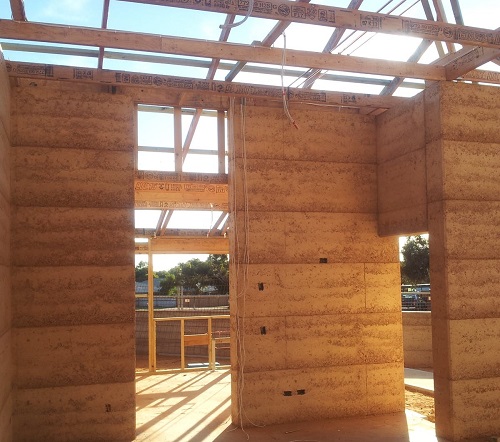 Saturday, May 4, 2024
Saturday, May 4, 2024  Saturday, May 4, 2024
Saturday, May 4, 2024 
Steel and concrete is the preferred material nowadays in construction. Not only do they provide an impeccable return of investment throughout the years due to their durability, they are also readily available around the world.
Globalization brought forth convenience to us, these mainstream materials are the usual standard materials in modern buildings around the world.
But, such is not always the case as we continue to push for sustainability in every aspect of life or run the risk of having an uninhabitable planet.
On our quest to achieve this feat, scientists and innovators are working together to create a brighter future for all of us. They are engaged in discovering ingenious techniques and materials that will solidify our harmonious existence one with nature.
Perhaps the answer lies in looking back?
Traditional rammed earth is made of a mix of clay-rich soil, water and a natural stabiliser such as animal urine, animal blood, plant fibres or bitumen. It is then compacted inside temporary formworks that are removed after the mix has dried and hardened. The resulting structure can withstand compressive forces of up to 2.5 megapascals (around 10% of the average compressive strength of modern bricks).
Rammed earth does not involve heavy science nor hard engineering principles. It is just a mixture of earth’s natural materials. However, there are different implementations in building from this material as there are various climates within a given region.
Working with rammed earth requires a strong understanding of the climate and location in which the structure is to be built. Typically, the rammed earth technique works best in climates with high humidity and relatively moderate temperatures. In colder climates, rammed earth walls may need additional insulators, while in locations with high rainfall, they need additional protection against rain.
Environmental Impact and Benefits
The material has very low embodied energy but needs to be insulated in cooler climates. The density of rammed earth is similar to clay brickwork or concrete blockwork and the constituent materials are almost identical. As a result, the thermal performance is comparable. However, using earth construction could easily reduce the carbon footprint of a wall by two thirds.
Again, rammed earth is sustainable as its decay materials are biodegradable. It also makes it a cost-effective solution for rural areas where these materials are abundant.
Aside from its environmental benefits, a study presented that rammed earth walls can stand the test of time. The rammed earth walls that are experimented were constructed and exposed for 20 years to natural weathering, in a wet continental climate and have not collapsed.
For millennia, Chinese leaders instituted wall-building projects to protect the land from northern, nomadic invaders. One surviving section of such an ancient wall, in the Shandong province, is made of hard-packed soil called “rammed earth” and is estimated to be 2,500 years old.
This yet proves how our ancestors make use of what they have in the best possible way. From building up security and providing sustainable building solutions, rammed earth applications abound endless.
“To house Heysen’s works in a stunning earthy structure nestled amongst the beautiful rolling Adelaide Hills is such a fitting tribute to this incredible South Australian. I have no doubt this will become Australia’s equivalent of Monet’s garden right here in Hahndorf,” said James Sexton, chair of the Heysen Foundation.
Structures made using rammed earth exudes a unique, raw physical appearance that is a work art of itself. The earthiness blends well in architectural pieces constructed in nature-abundant theme.
There are already building regulations for rammed earth construction. The scope covers the basic implementation of fire safety and all through the workmanship involves.